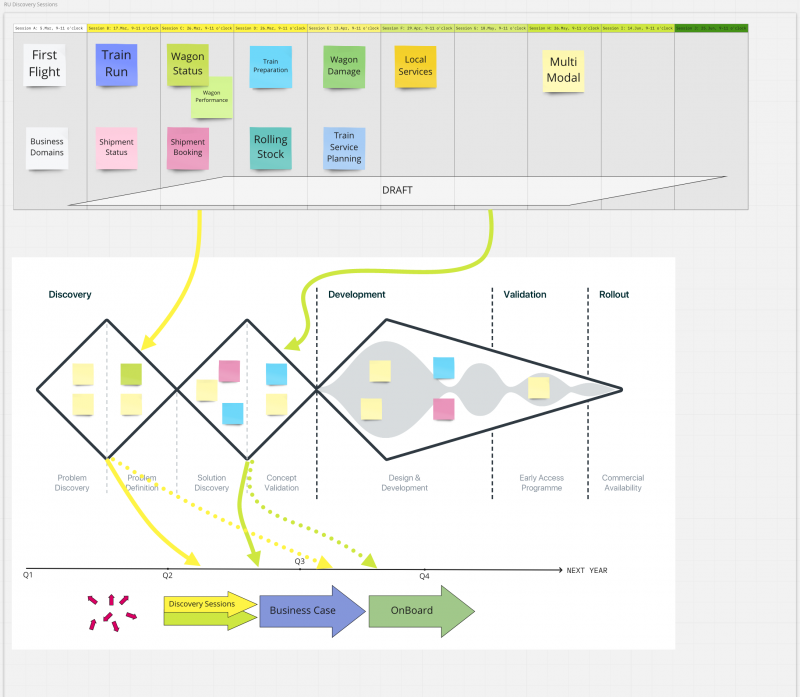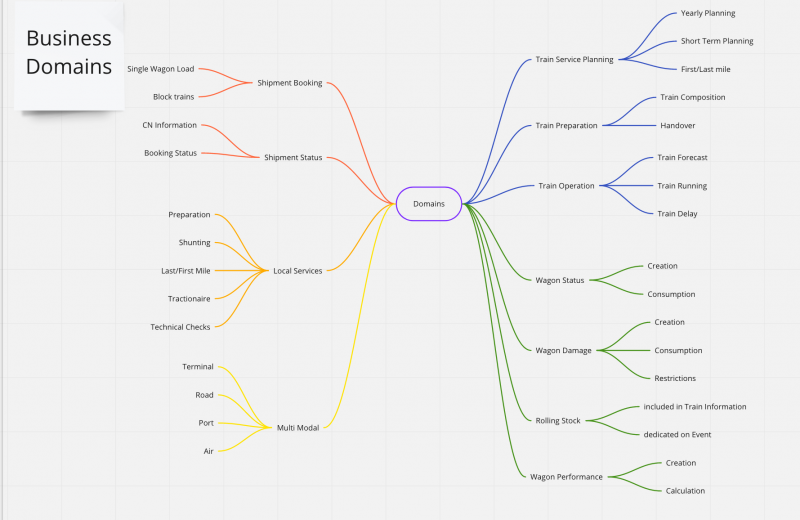Difference between revisions of "Phase2 Iteration4"
(Created page with "The Phase 2 works in iterations. See setup of the Architecture stream. == Iteration 4 == The fourth iteration lasts from 25.March to 15.April. === Topics === ==== Capabiliti...") |
(No difference)
|
Revision as of 22:16, 19 March 2021
The Phase 2 works in iterations. See setup of the Architecture stream.
Contents
Iteration 4
The fourth iteration lasts from 25.March to 15.April.
Topics
Capabilities
The top most ranked capabilities from the shopping list are treated in this third iteration. Also tasks created during the work in the previous iterations are continued here.
A&B RU's requirements
We plan one or two introduction sessions for the interested type A&B RU partners. Additionally the first Discovery Session will take place in this iteration. So at the end of this iteration we can give a first insight of the new workshop format.
SM: SmartService Profile
Based on the Smart Services list we will describe
- what the smart service is about
- what is the aim
- which needs does it cover and
- what is the potential benefit of it.
We have begun to create the first profiles and will continue in this iteration.
C43: Pilot WSM quality
Results
A&B RU requirements
In this task we had to enlarge the scope beyond TrainOperation and Consignment Note information. We have created a structure to learn about the "small" RUs situation and their needs. For that we will organize sessions where we work out the (IT and process) surrounding in which those RUs operate. The actual planning foresees to have discovery sessions regularly every two weeks in the next months:
The content discussed in those sessions encompasses the topics a smaller RU is faced with:
With this structure in place we will plan the discovery sessions for the next weeks. Please help us and publish these sesssions internally in your company to attract many interested parties. The target group are type "A" and "B" RU (see below). The preparation consists of three steps:
- Send a mail to RFF ARCH group
- Read the RFF introduciton slides and the entry questions in the questionnaire to acquaint yourself to the topics
- Register at MIRO to access the board used in the sessions
The material is available on Basic Material for Discovery Sessions.
Small RU
The term Small RU is for our purpose too vage and may lead to different interpretations. Our distinction is focused on what type of IT the RU is using:
- Office and webbbased IT: The RU requires both external webbased and mobile clients and he needs a Office based integration. Some steps in the use cases are covered by manual interactions. He requires webbased or mobile Apps to enable him to participate in the common data transfer.
- Lean, off-the-shelf IT: The RU runs off-the-shelf software with "standard" apdapters for different services. Some advanced use cases are not supported by his systems and are (semi)- manually. He is looking for suitable interfaces to conntect to the off-the-shelf adapters.
- Extensive, tailor made IT: The RU runs tailor made software adpated to his specific needs. This can be based on off-the-shelf software too which was tailored to an importent degree according to his needs. He wants to evolve his IT landscape frictionless and secure the return on his investments. The volume of transactions don't allow (semi)- manual processes. He looks for external services that helps him to streamline his processes internally and to innovate the next service types.
This leads to different requirements for digital platforms. Therefor we differentiate in our context between the three RU types:
- App based RU (web, mobile, office)
- Basic API oriented RU (based on sector standards)
- Comprehensive service oriented RU (full service context)
This is a model to distinct between the different needs of such a schematic sketched RU. In real life a RU may combine several of those types. He may run a tailor made, extensive commercial system (so type C RU). In production he plans with webbased tools (type A RU) and he operates his transports with an off-the-shelf product (type B RU).
SM: SmartService Profile
Based on the Smart Services list we have described the following Smart Services.
- SM_01 Optimize Asset Utilization
- SM_13 Share Free Capacity
- SM_21 GPS triggered TRI
- SM_22 WDI Enhancement for Last Mile
- SM_23 TelematicData of Wagon
We will continue to describe the next Smart Services. With these profiles we can then start the discussion with the CIO/steering committee on prioritization.
We have collected all capabilities with legal issues for the usage in sessions with ERA/EU to discuss the development of European standards. The list of gaps and capabilities is available here.
==== C14: Pilot WSM quality ==== We have finished the work on the WSM KPI pilot to learn and prove the RFF KPI maintenance process. With this we are able to propose the appropriate data quality maintenance process and necessary reports. We reached the aim to close the pilot at the end of iteration 3 and proceed now with the normal data quality maintenance process.
C34: Implement WPM quality
The implementation of the measurement of the defined KPIs is ongoing and needs to finish before we can start the WPM pilot in Iteration 5.

